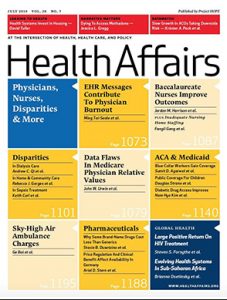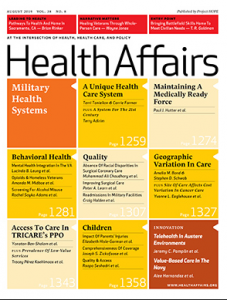Cambridge Journal of Economics
Volume 42, Number 5 – September 2018
Contents:
- Great Expectations and Final Disillusionment: Keynes, “My Early Beliefs” and the Ultimate Values of Capitalism/ Anna M. Carabelli and Mario A. Cedrini. pp. 1183-1204
- The Liquidity of Money/ M. G. Hayes. pp. 1205-1218
- An Initial ‘Keynesian illness’? Friedman on Taxation and the Inflationary Gap/ Enrico Sergio Levrero. pp. 1219-1237
- Wang Anshi’s Economic Reforms: Proto-Keynesian Economic Policy in Song Dynasty China/ Xuan Zhao and Wolfgang Drechsler. pp. 1239-1254
- Macroeconomic Priorities Revisited: The Behavioural Foundations of Stabilization Policies/ Fabio D’Orlando and Francesco Ferrante. pp. 1255-1275
- Debt Cycles, Instability and Fiscal Rules: A Godley-Minsky Synthesis/ Yannis Dafermos. pp. 1277-1313
- Financialised Internationalisation and Structural Hierarchies: A Mixed-Method Study of Exchange Rate Determination in Emerging Economies/ Annina Kaltenbrunner. pp. 1315-1341
- Tailwinds from the East: How has the Rising Share of Imports from Emerging Markets Affected Import Prices?/ John Lewis and Jumana Saleheen. pp. 1343-1365
- Unproductive Accumulation in the USA: A New Analytical Framework/ Tomas N. Rotta. pp. 1367-1392
- The Effects of Financialization on Investment: Evidence from Firm-Level Data for the UK/ Daniele Tori and Ozlem Onaran. pp. 1393-1416
- Job Seeker’s Allowance (JSA) Benefit Sanctions and Labour Market Outcomes in Britain, 2001-2014/ Martin Taulbut, Daniel F. Mackay and Gerry McCartney. pp. 1417-1434
- Cornelius Castoriadis on Institutions: A Proposal for a Schema of Institutional Change/ Angelos T. Vouldis. pp. 1435-1458
- Decision-Making Processes and Multilayered Institutional Order: Lionel Robbins’s Legacy/ Fabio Masini. pp. 1459-1472
- The Convoluted Influence of Robbins’s Thinking on the Emergence of Economics Imperialism/ Ignacio Falgueras-Sorauren. pp. 1473-1494
Health Affairs
Volume 38, Number 2 – February 2019
Contents:
- Hospitals, Health IT, and more/ Alan R. Weil. pp. 175
- Court Rules Individual Mandate, Entire ACA Unconstitutional/ Katie Keith. pp. 176-177
- For Women Living with HIV, a Trauma-Informed Approach to Care/ Brian Rinker. pp. 178-183
- Hospital Prices Grew Substantially Faster Than Physician Prices for Hospital-Based Care in 2007-14/ Zack Cooper et. al. pp. 184-189
- Performance of Safety-Net Hospitals in Year 1 of the Comprehensive Care for Joint Replacement Model/ Caroline P. Thirukumaran et. al. pp. 190-196
- Does Health Information Exchange Improve Patient Outcomes? Empirical Evidence from Florida Hospitals/ Min Chen, Sheng Guo and Xuan Tan. pp. 197-204
- Access to E-Prescriptions and Related Technologies Before and After Hurricanes Harvey, Irma, and Maria/ Jaime Y. Smith and Max M. Sow. pp. 205-211
- Health System Approaches are Needed to Expand Telemedicine Use Across Nine Latin American Nations/ Cynthia M. LeRouge et. al. pp. 212-221
- Explaining the Slowdown in Medical Spending Growth Among the Elderly, 1999-2012/ David M. Cutler et. al. pp. 222-229
- Variation in Health Spending Growth for the Privately Insured from 2007 to 2014/ Zack Cooper et. al. pp. 230-236
- Health Care Spending Slowed After Rhode Island Applied Affordability Standards to Commercial Insurers/ Aaron Baum et. al. pp. 237-245
- Improving the Medicare Physician Fee Schedule: Make It Part of Value-Based Payment/ Robert A. Berenson and Paul B. Ginsburg. pp. 246-252
- Risk Adjustment in Medicare ACO Program Deters Coding Increases But May Lead ACOs to Drop High-Risk Beneficiaries/ Adam A. Markovitz et. al. pp. 253-261
- Medicare Advantage and Commercial Prices for Mental Health Services/ Daria Pelech and Tamara Hayford. pp. 262-267
- Primary Care Office Visits for Acute Care Dropped Sharply in 2002-15, While ED Visits Increased Modestly/ Shih-Chuan Chou et. al. pp. 268-275
- In States that Border Mexico, Cesarean Rates were Highest for Hispanic Women Living in Border Counties in 2015/ Jill A. McDonald et. al. pp. 276-286
- A Transitioning Epidemic: How the Opioid Crisis is Driving the Rise in Hepatitis C/ David Powell, Abby Alpert and Rosalie L. Pacula. pp. 287-294
- Qualifying Conditions of Medical Cannabis License Holders in the United States/ Kevin F. Boehnke et. al. pp. 295-302
- Trends in Coverage for Disease-Modifying Therapies for Multiple Sclerosis in Medicare Part D/ Daniel M. Hartung et. al. pp. 303-312
- Impact of the Priority Review Voucher Program on Drug Development for Rare Pediatric Diseases/ Thomas J. Hwang et. al. pp. 313-319
- Managing Cancer Patients’ Expectations Amid Hope and Hype/ Joseph O. Jacobson. pp. 320-323
- Homelessness and Health Care: What is Being Funded?/ Lee L. Prina. pp. 324-325
- BookMarks. pp. 326-327
- Immeasurable Time Bias in Exposure to Ivacaftor/ Amir Sarayani and Almut Gertrud Winterstein. pp. 328
- Cystic Fibrosis and Ivacaftor Use: The Authors Reply/ Lisa B. Feng, Scott D. Grosse and Gregory S. Sawicki. pp. 328
- Educating Caregivers to Provide Safe Care/ Marjorie S. Wiggins, Peter Bates and James Benneyan. pp. 328
- Covering the Uninsured in California/ Lucy Johns. pp. 329
- Covering All Californians: The Authors Reply/ Walter A. Zelman and Lucien Wulsin. pp. 329-330
- Priorities in Patient Safety/ Hyung J. Cho and Mona Krouss. pp. 330
- Real-Time Patient Safety Surveillance Program/ Asghar Shah. pp. 330-331
- Real-Time Patient Safety: The Authors Reply/ David Classen and Drew Ladner. pp. 331
- Telemedicine in Substance Use Disorder Treatment/ David Barash. pp. 331
- Errata. pp. 332
Health Affairs
Volume 38, Number 1 – January 2019
Contents:
- Substance Use,Payment and More/ Alan R. Weil. pp. 7
- Primary Care Where Everybody Knows Your Name/ Bara L. Vaida. pp. 8-13
- Medication Treatment for Opioid Use Disorders in Substance Use Treatment Facilities/ Ramin Mojtabai,et. al. pp. 14-23
- Trends in Buprenorphine Prescribing by Physician specialty/ Hefei Wen, et. al. pp. 24-28
- Divergence in Recent Trends in Deaths from Intentional and Unitentional Poisoning/ Katherine Hemstead and Julie Phillips. pp.29-35
- Decreases in Roadmissions Credited to Medicare’s Program to Reduce Hospital Readmissions Have Been Overstated/ Christopher Ody, et. al. pp. 36-43
- National Representativeness of Hospitals and Markets in Medicare’s Mandatory Bundled Payment Program/ Joshua M. Liao,et. al. pp. 44-53
- An Alternative Payment Model to Support Widespread Use of Collaborative Dementia Care Models/ Malaz Boustani, et. al. pp. 54-59
- Targeted Incentive Programs for Lung Cancer Screening Can Improve Population Health and Economic Efficiency/ David D. Kim, et. al. pp. 60-67
- What’s Been the Bang for the Buck? Cost-Effectiveness of Health Care Spending Across Selected Conditions in the US/ David Wamble,et. al. pp. 68-75
- The Contribution of NEw Product Entry Versus Existing Product Inflation in the Rising Costs of Drugs/ Inmaculada Hernandez, et. al. pp. 76-83
- Seven Former FDA Commissioners: The FDA Should be an Independent Dederal Agency/ Robert M. Califf, et. al. pp. 84-86
- Its Still the Prices,Stupid : Why the US Spends so Much on Health Care and a Tribute to Uwe Reinhardt/ Gerard F. Anderson,et. al. pp. 87-95
- National Health Care Spending in 2017: Growth Slows to Post- Great Recession Rates;Share of GDP Stabilizes/ Anne B. Martin, et. al. pp. 96-106
- Characteristics and Spending Patterns of Persistently High -Cost Medicare Patients/ Jose F. Figueroa, et. al. pp. 107-114
- Top-Funded Digital Health Companies and their Impact on High -Burden,High -Cost Conditions/ Kyan Safavi, et. al. pp. 115-123
- Access to Hearing Care Services Among Older Medicare Beneficiaries Using Hearing Aids/ Amber Willink, et. al. pp. 124-131
- Antipoverty Impact of Medicaid Growing with State Expansions over Time/ Naomi Zewde and Christopher Wimer. pp. 132-138
- Homelessness Contributes to Pregnancy Complications/ Robin E. Clark, et. al. pp. 139-146
- Potential Effects of Eliminating the Individual Mandate Penalty in California/ Vicki Fung , et. al. pp. 147-154
- Past Frequent Emergency Department Use Predicts Mortality/ Matthew J. Niedzwiecki, et. al. pp. 155-158
- Pain Behavior:What My Pain Treatment ot Wrong/ Jonathan D. Mayer. pp. 159-163
- The John A. Harford Foundation and the Growth of Geriatrics/ Stephen Isaacs, et. al. pp. 164-168
Health Policy and Planning
Volume 33, Number 9 – November 2018
Contents:
- Developing more Participatory and Accountable Institutions for Health: Identifying Health System Research Priorities for the Sustainable Development Goal-Era/ K Scott et. al. pp. 975-987
- Does Supportive Supervision Enhance Community Health Worker Motivation? A Mixed-Methods Study in Four African Countries/ M C Kok et. al. pp. 988-998
- Estimating the Cost and Cost-Effectiveness for Obstetric Fistula Repair in Hospitals in Uganda: A Low Income Country/ I Epiu et. al. pp. 999-1008
- Building Informed Trust: Developing an Educational Tool for Injection Practices and Health Insurance in Cambodia/ S Ozawa et. al. pp. 1009-1017
- Long-term Care Systems as Social Security: The Case of Chile/ P Villalobos Dintrans. pp. 1018-1025
- Does Payment for Performance Increase Performance Inequalities Across Health Providers? A Case Study of Tanzania/ P Binyaruka et. al. pp. 1026-1036
- How does Managed Competition Affect Hospital Prices in a Social Health Insurance System? The Colombian Case/ R Fernando, A-B Leticia and T Antonio J. pp. 1037-1046
- The Impact of Out-of-Pocket Costs on Treatment Commencement and Adherence in Chronic Kidney Disease: A Systematic Review/ R Dodd et. al. pp. 1047-1054





